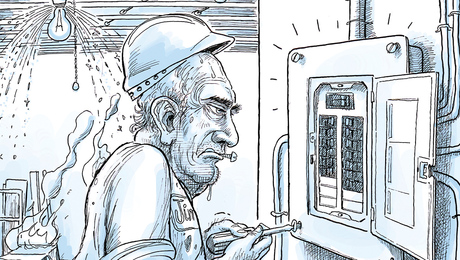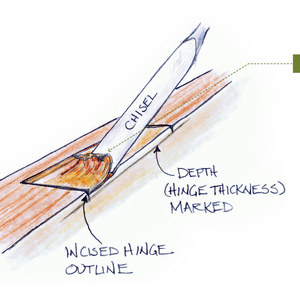I’m doing some repairs to an existing (8 years old+-) copper roof. We had to remove some of the pans near the ridge and discovered quite a bit of condensation. Started looking around and found no soffit venting what so ever, and gable venting that doesn’t affect all the roof area. I need to rectify this and don’t want to go into it blindly ( although, anything would be better than the current situation). For the last 7-8 years (since before I was online), almost every roof I’ve installed has been architect designed (venting included), or if a roof replacement, I just revented as it was done originally. When I used to shingle, I had tons of charts to size roof/soffit vents. I can’t find any of that stuff now, and googling gives me a bunch of useless info. HELP>>>>>>
Discussion Forum
Discussion Forum
Up Next
Video Shorts
Featured Story

Dangerous electrical work and widespread misconceptions cause fires, deaths, and $1.5 billion in property damage annually.
Highlights
"I have learned so much thanks to the searchable articles on the FHB website. I can confidently say that I expect to be a life-long subscriber." - M.K.
Fine Homebuilding Magazine
- Home Group
- Antique Trader
- Arts & Crafts Homes
- Bank Note Reporter
- Cabin Life
- Cuisine at Home
- Fine Gardening
- Fine Woodworking
- Green Building Advisor
- Garden Gate
- Horticulture
- Keep Craft Alive
- Log Home Living
- Military Trader/Vehicles
- Numismatic News
- Numismaster
- Old Cars Weekly
- Old House Journal
- Period Homes
- Popular Woodworking
- Script
- ShopNotes
- Sports Collectors Digest
- Threads
- Timber Home Living
- Traditional Building
- Woodsmith
- World Coin News
- Writer's Digest


















Replies
The standard roof ventilation formula used by roofing manufacturers, ARMA, and model building codes is 1 square foot of ventilation per 150 square feet of ceiling area IF you unequal venting (only gable vents or only soffit vents). Alternatively, if you have roughly half your venting at the soffit / eaves edge and the other half at the top (ridge vent, mushroom roof vents, gable vents....) then you only need 1 square foot of venting for every 300 square feet of ceiling area.
Ceiling area is the ceiling of the dwelling space - not the roof surface area. A flat ceiling of a building that's 24 x 40 = 960. If the ceiling is vaulted then you have to measure the vault surface area.
Now this is a 'standard'. It may be overkill in some situations like when there's a well detailed air barrier between living space and the attic and all holes are air sealed. But the ventilation may not be enough in an overly leaky ceiling.
MG
This is a story and a half house. I've always wondered how that rule applies to this situation. Do I use the upstairs ceiling only or the downstairs ceiling area behind the kneewall as well, and what about the sloped part where the ceiling is applied directly to the rafters?
Count only ceilings that communicate directly with attic or rafter spaces. Where drywall is direct to rafters - measure surface area of ceiling - treat it like a vauted ceiling. Behind kneewalls I'd count the rafter area rather than trying to determine the ceiling area of the first floor. It will be a slightly greater number so that's OK - you aren't reducing ventilation but rather increasing it.
You also need to figure out where that mositure is coming from.
In my area (NW Ohio) most tiomes that I see significant condensation problems on the roof sheathing, I'm also seeing significant moisture problems in the crawl or basement.
_______________________
Why Don't Blind People Like To Sky Dive?
Because it scares the bejabbers out of the dog
Your mileage may vary ....
This didn't appear overly moist. There was some staining on the bottom of the copper. The copper was installed w/o any sort of underlayment. In the two wings which have gable vents (but no soffit vents), the underside of the copper was still shiny. No sign of any damage to the sheathing.
Here's a couple of sites with good info.
http://www.certainteed.com/pro/ventilation/pdf/PrinciplesAtticVent.pdf
http://www.buildingscience.com/
Yeah, that's what I'm after - thanks.
they have been talk in the deep humid south of not venting the roof at all 100% air tight. They thinking keep the moisture out and let the intrerior cook
Well, here's another that comes to mind.
Scroll a ways down the page and you'll see links to some very good articles.
http://www.umass.edu/bmatwt/publications/by_author.html
Knowledge is power, but only if applied in a timely fashion.